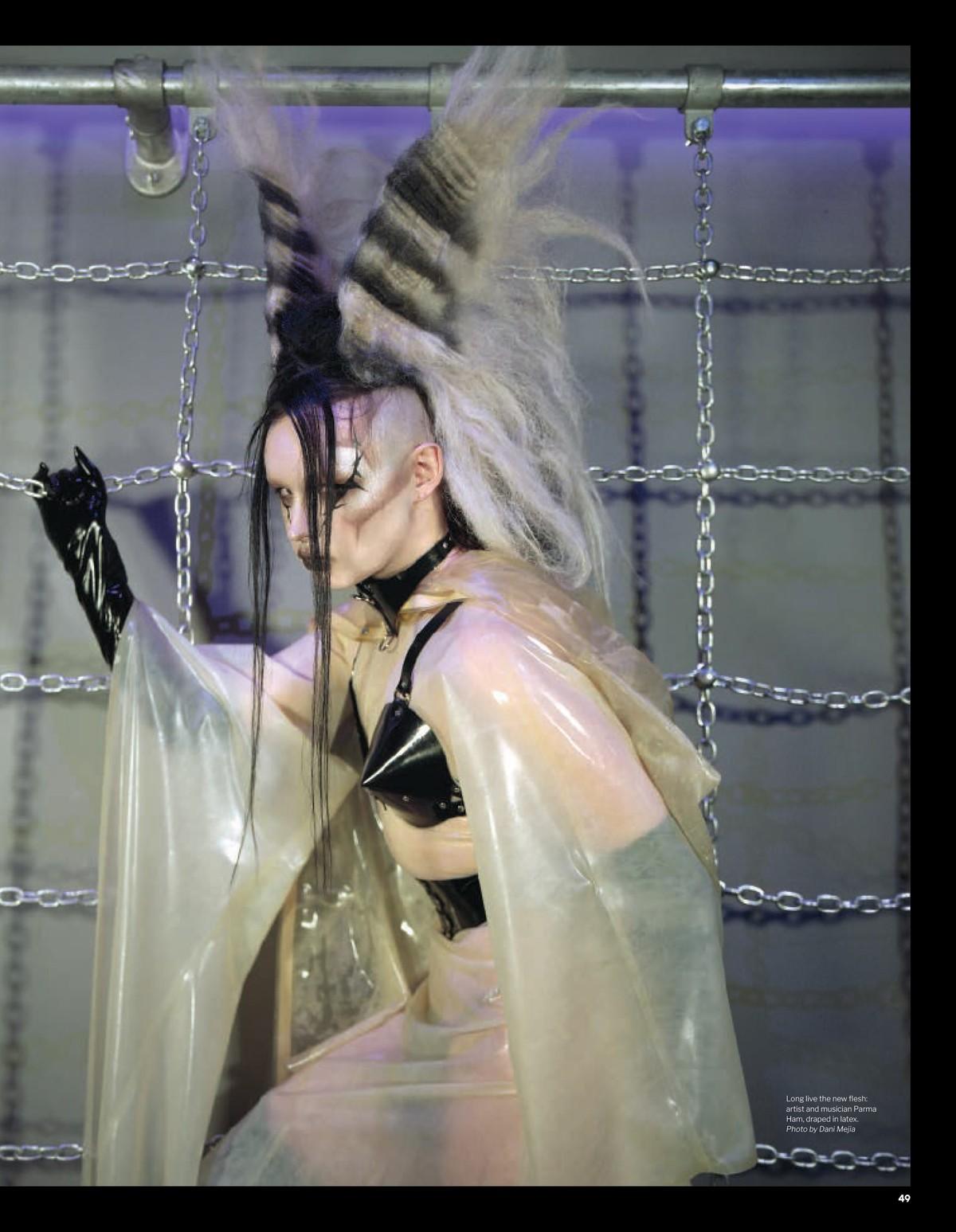Eleganza
A HISTORY OF LATEX IN GOTH AND INDUSTRIAL MUSIC
Fashion’s sexiest, squeakiest attire, from the SEX shop to today’s runways.


To marry sex and death together is a perfect union,” says Parma Ham about latex clothing and the goth subculture.
As a marriage that’s been entangled since the dawn of goth at the turn of the 1980s, the thrilling fascination of both sex and death is ever present. Black, goth’s color of choice, only enhances the allure: The shade of sin, it also reeks of prowess and elegance, two magnetic and essential components of the goth movement.
As a music subculture, goth spans more than 40 years and, for this purpose, will be used as an umbrella term for an array of subgenres and adjacent scenes. With its beginnings in post-punk music—which was a symbiosis of melancholy melodies, synthesizer swells, and eerie atmospheres—an affinity for darkness has always remained. Even goth’s mascot, the vampire, oozes the exciting danger of a sexually charged encounter (Dracula is forever embraced by Bauhaus’ anthemic song “Bela Lugosi’s Dead”). The vampire and victim, master and slave, are common themes of power and subservience within the aesthetics of both goth and fetishism. Death or punishment: They beg for it just the same.

